Ants as pets? The hobby is catching on in Singapore
SINGAPORE — They loiter around void decks at night, swooping in when they spot a prized catch. No, it is not Pokemons they are hunting – these “collectors” are after pregnant queen ants to kickstart their own ant colonies.
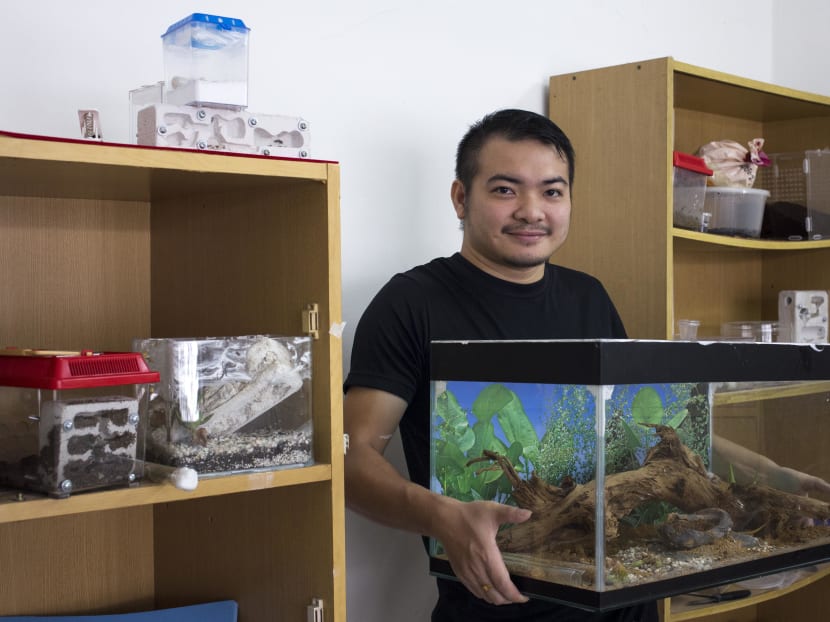
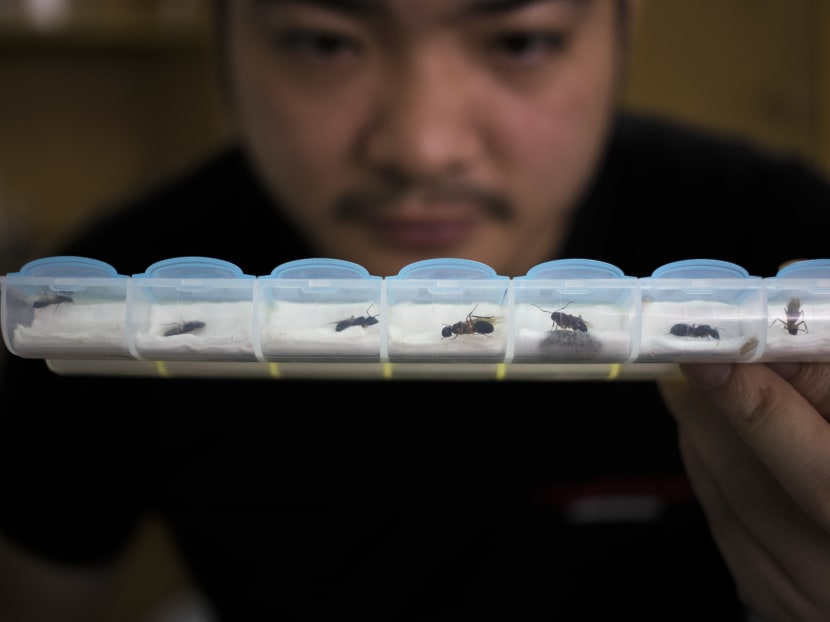
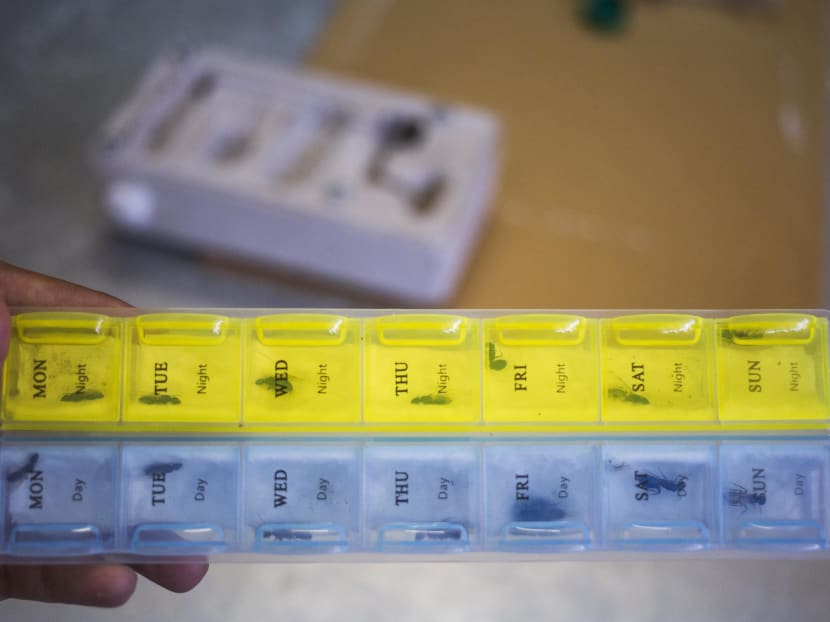
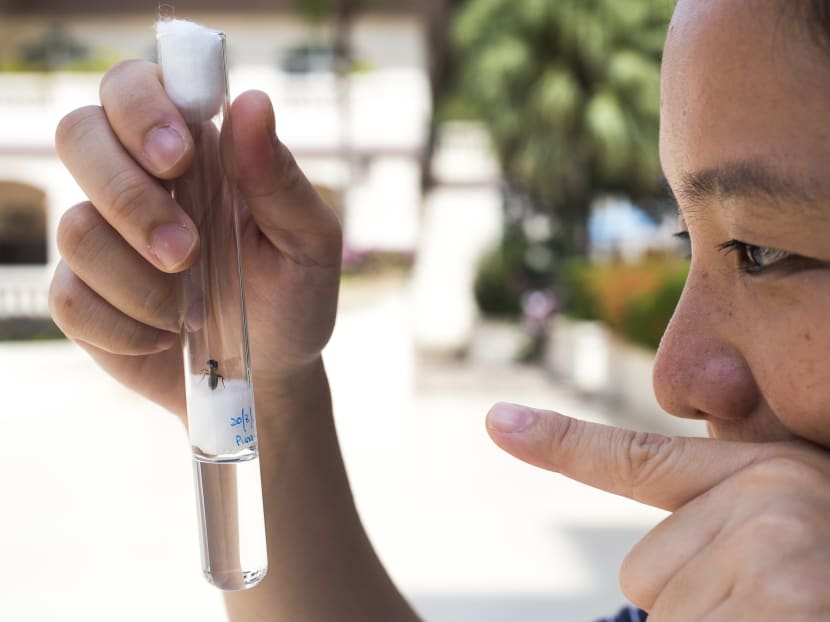
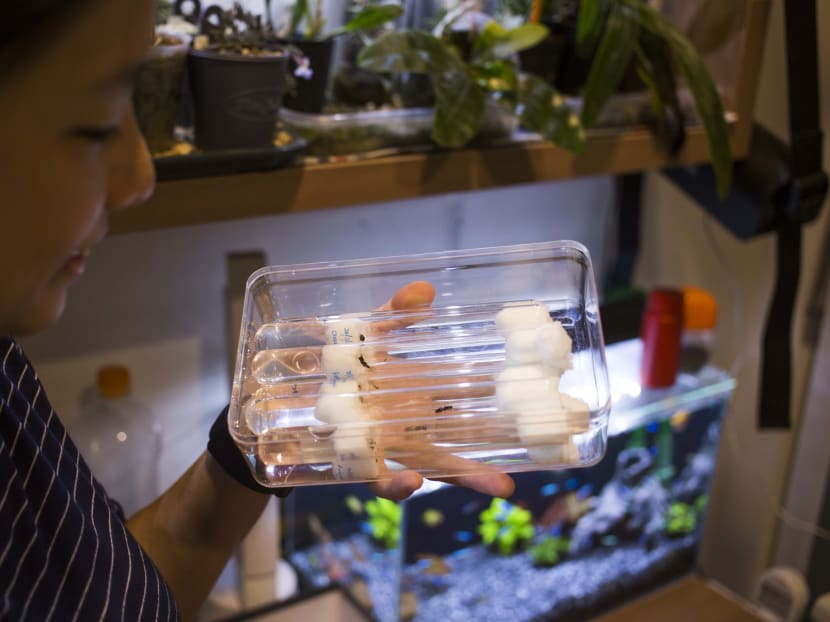
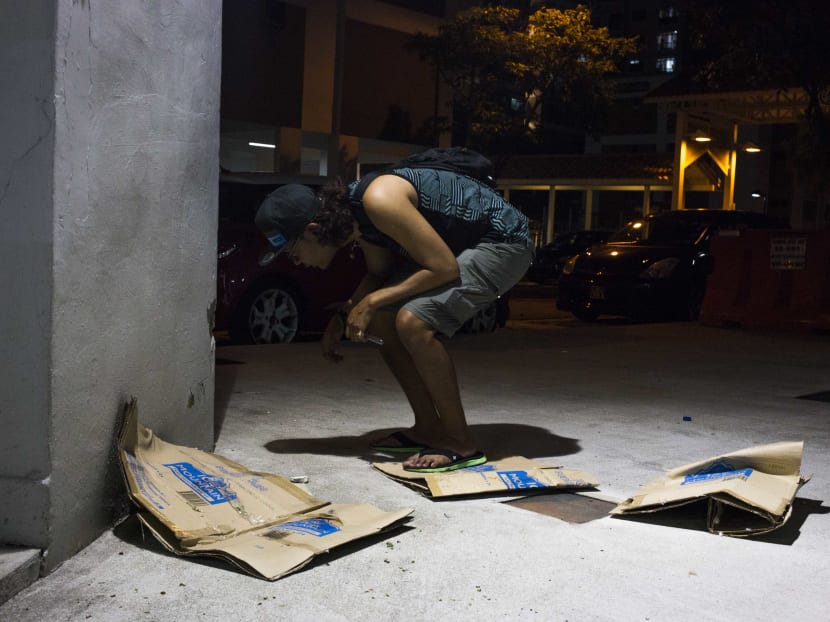
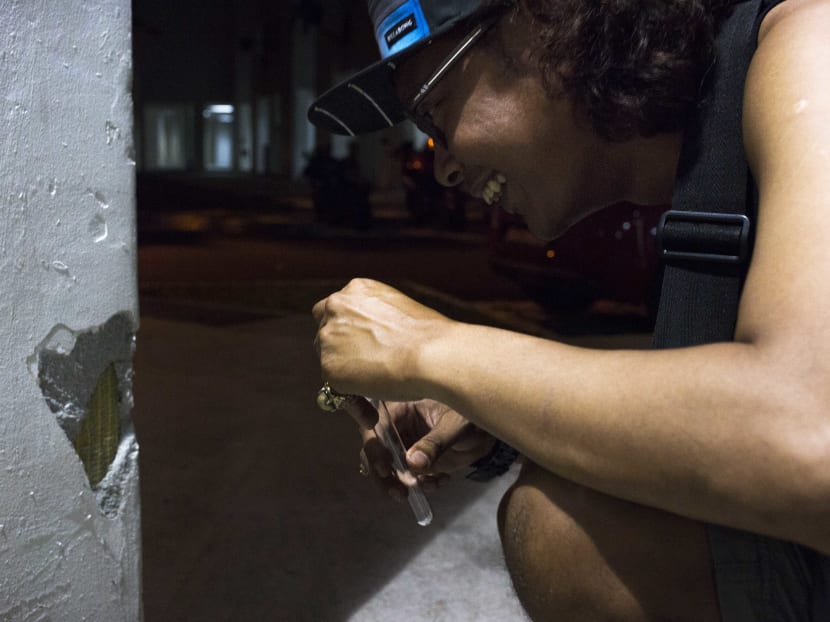
SINGAPORE — They loiter around void decks at night, swooping in when they spot a prized catch. No, it is not Pokemons they are hunting – these “collectors” are after pregnant queen ants to kickstart their own ant colonies.
Keeping ants as pets seems to be slowly catching on among a small community here. Since last December, at least 30 local enthusiasts have banded together to form a Facebook group to share their new hobby.
Like in Pokemon Go, there are varieties to collect and “hot spots” where more-prized species can be found. More than 50 ant species can be found in Singapore, including a rarer one called the trap-jaw, characterised by its ability to open its mouthpiece up to 180 degrees wide and shut it in a snap.
Jurong Bird Park assistant curator Angelin Lim, like most local hobbyists, got intrigued after stumbling in February upon a YouTube channel called AntsCanada, which has been promoting the cultivation of pet ant colonies using queen ants since 2009.
The 32-year-old told TODAY: “In my workplace, we feed our baby birds with ant eggs, so I started out wanting to see if I can cultivate them.”
But her plans were soon scuppered as she fell in love with the six-legged critters.
“The more I learnt, the more amazed I got at how they take care of one other, how they take care of their queen, and the hive mindset. Their world is not me, I and myself, but me for the entire colony,” she said.
So whenever it rains or when there is increased swiftlet, bat or lizard activity, Ms Lim gets excited – as these are harbingers of a queen ant flying out to mate – which increases her chances of nabbing one.
Her biggest colony is made up of more than 10 worker ants, all of which were laid by one queen carpenter ant.
Her newfound hobby, however, is not appreciated by many around her. “My parents said: ‘What? You have nothing else to do, is it?’”
The draw, said Ms Lim, her fiance and other hobbyists, is they can relive their childhood adventures of catching spiders in the field and guppies in the drain.
There is also joy in being able to build a colony big enough to observe how the castes work – workers tending to hive’s daily needs and soldiers protecting the queen.
Designing the formicarium (or ant’s homes) can also feel like playing the once-popular computer game SimCity.
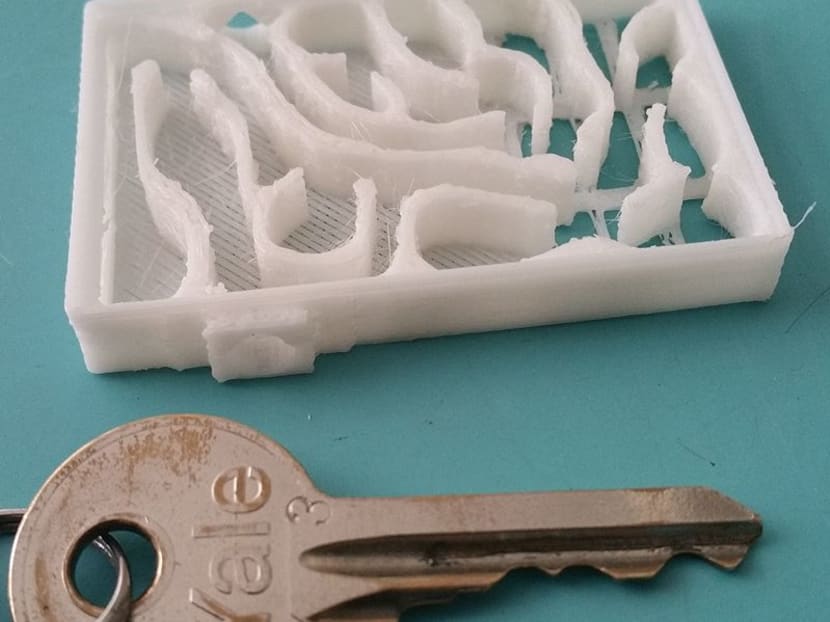
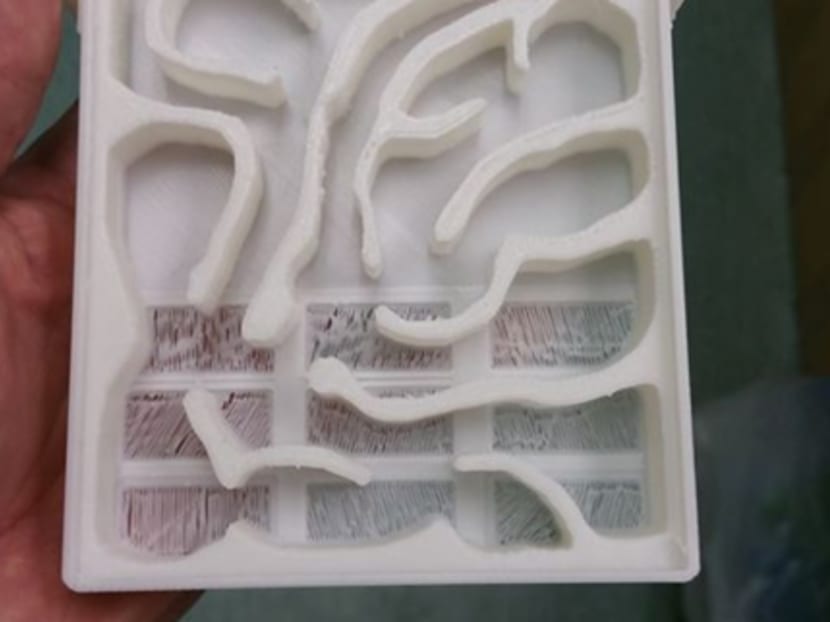
(Above) Member of the Ants Community Singapore Facebook group, Joshua Tan, holding up two 3-D printed formicariums of varying sizes he built at his workplace. He printed them using a 3-D file of the design that's available online. The smaller one is his prototype. Photos: Joshua Tan
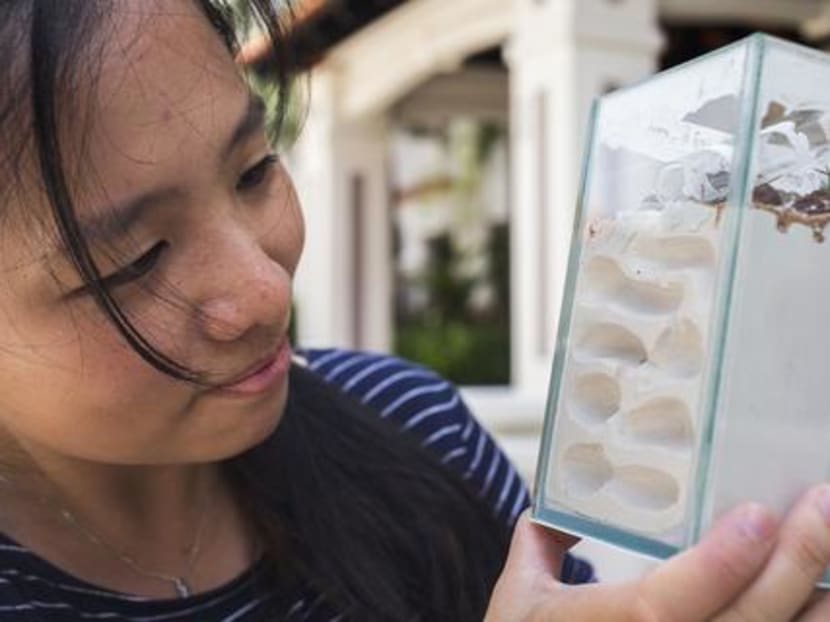
(Above) Ms Lim holding up a formicarium she built using plaster of Paris fitted in a small fish tank she got for about S$5. Below is a photograph she took in the process of her making it. Photos: Wong Pei Ting, Angelin Lim
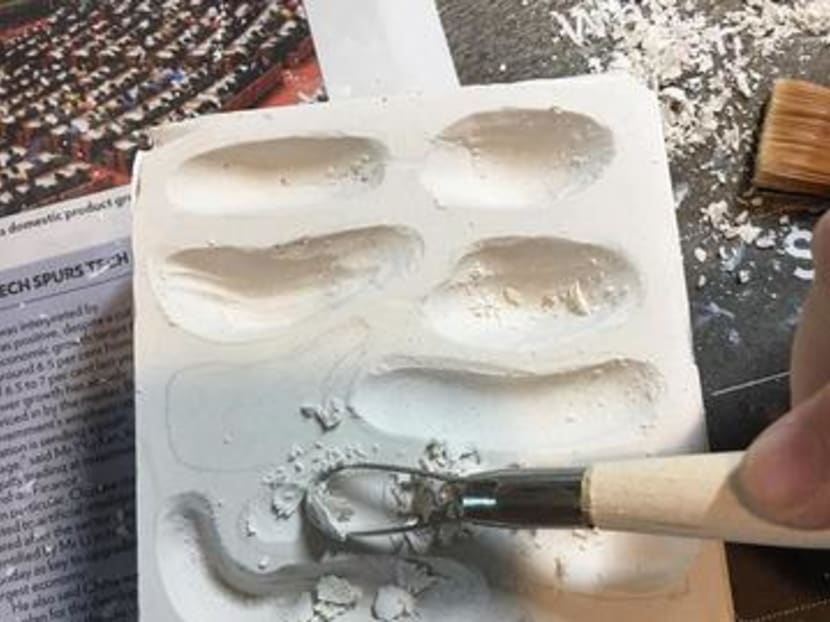
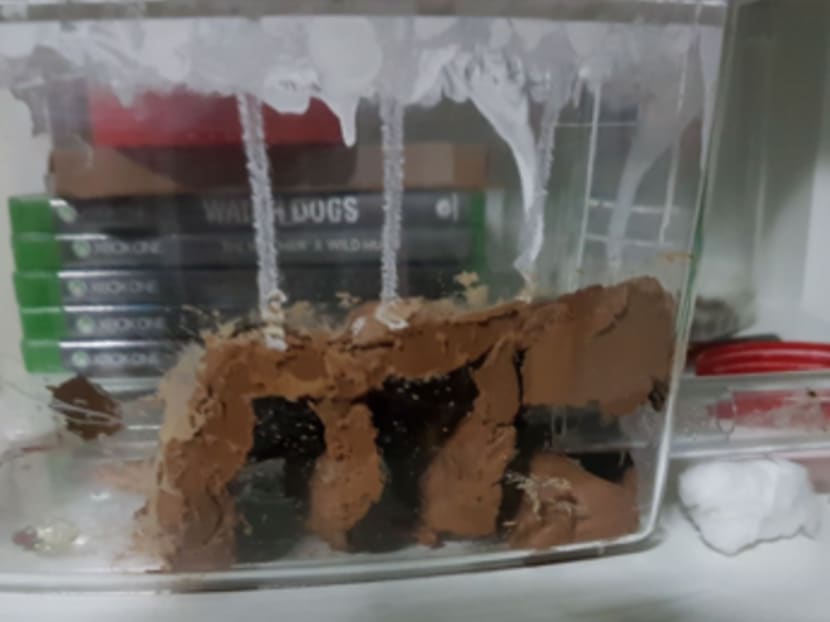
(Above) Mr Iskandar shared this photo of a formicarium he built using clay moulded to mimic chambers. He connected it to a test-tube with a queen that has already bred some workers. Photo: Muhammad Iskandar Riza Bin Noor Affandi
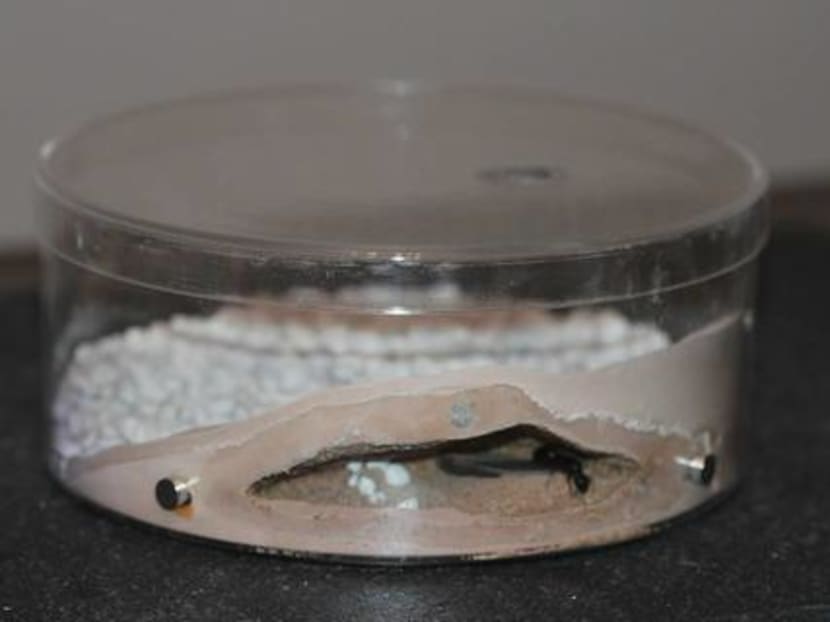
(Above) A formicarium made of a mix of clay and fine sand built by Member of the Ants Community Singapore Facebook group, Ayid Kiddo. Below is a photo of her latest formicarium that was bought. Photo: Facebook/Ayid Kiddo
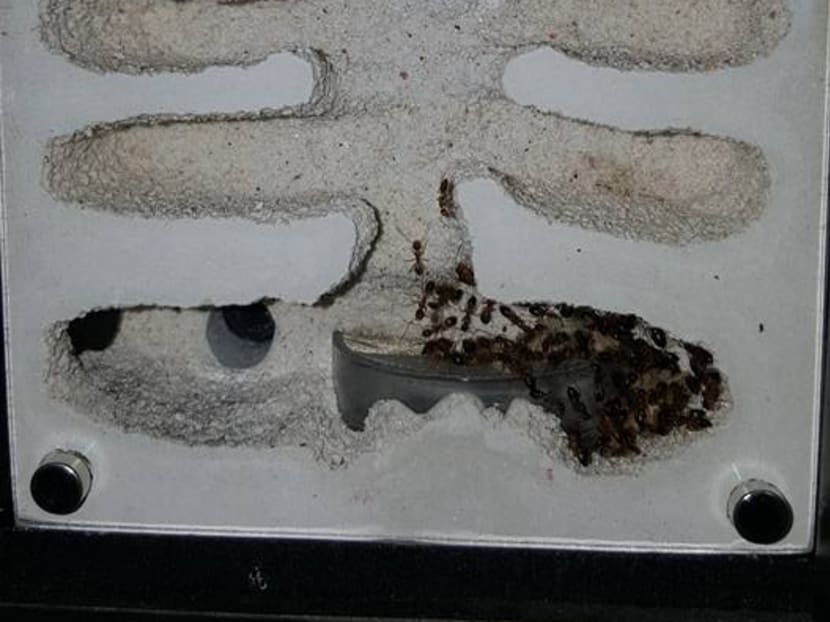
While ants might seem like hardy creatures, a whole colony can be wiped out by one wrong move, as Mr Muhammad Iskandar Riza Bin Noor Affandi found out.
His six-month-old colony of seven workers and one carpenter queen died last Monday (March 27) for reasons unknown, devastating the 29-year-old lifeguard who started keeping ants eight months ago.
At the peak, the founder of Facebook group Ants Community Singapore had a colony of 20. He suspects they might have suffocated because he used a cover that’s too thick to keep them in the dark, which they prefer.
Antkeepers who want to get a head start without hunting can buy their queens from suppliers. Listed on AntsCanada’s website are seven ant “farmers” in Singapore, offering 44 colonies for sale.
The biggest and most expensive at S$2,000 is a nest of over 1,000 yellow crazy workers with four queens, kept in a 0.6m enclosure. A collection of 50 to 100 weavers is also going at a high price of S$800, as queen weavers are harder to catch than trap-jaws since they mate high up in the air.
Mr Chris Chan, a former shipping executive, started ant-keeping a year ago. He supplies schoolboys starter carpenter ant colonies consisting a queen with at least one worker for S$15 to S$30. His biggest ant sale to date is a trap-jaw queen with five workers in a small formicarium for S$250.
In what the 29-year-old said is a sign of the growing trend here, he also managed to sell five formicariums he designed in recent months for between S$40 and S$300.
One room in his rental home is dedicated to housing his collection of at least 10 formicariums – each built differently – and about 40 recently-caught queen ants, six of which are trap-jaws.
His largest colony consists up to 1,000 red fire ants, known for their stinging bites, housed in a large fish tank lined with a paste of talcum powder and alcohol at its mouth to prevent them from escaping.
Mr Chan’s dream is to be the region’s go-to for all things ants-related, as it is an “in-thing in the US and Taiwan” at the moment, but has yet to catch on in as big a way locally.
Even so, not all ants are pets to Mr Chan. Pointing to pharaoh and ghost ants crawling across his room furniture, he said: “Because of their size, they can squeeze through tight spaces, steal all the goods and kill my whole colony.”
One reminder he has for beginners: “Keeping ants is as big a responsibility as keeping dogs and cats; if you release captive ants back into the wild, it can affect the ecosystem. Give them a home, or don’t home them at all.”
HOW TO START A PET ANT COLONY
1. Catch a fertilised queen ant
Around 6pm to 8pm is the best time to nab a queen ant, said Mr Chan.
Look for an unusually large winged ant with a swollen bottom. Some males may have wings too but they are more slender.
2. House it well
Put the queen into a test tube or small container with a piece of wet cotton wool. Keep the container in a shaded place, away from disturbances. The queen needs to feel settled enough to lay eggs.
3. Wait for the eggs
If the queen sheds its wings, that’s a tell-tale sign it may lay some eggs soon.
If it does not lay any eggs after two weeks, it might not be fertilised, so it is time to let it go.
Ant eggs are tiny, white and oval. Those that hatch will be your first worker ants.
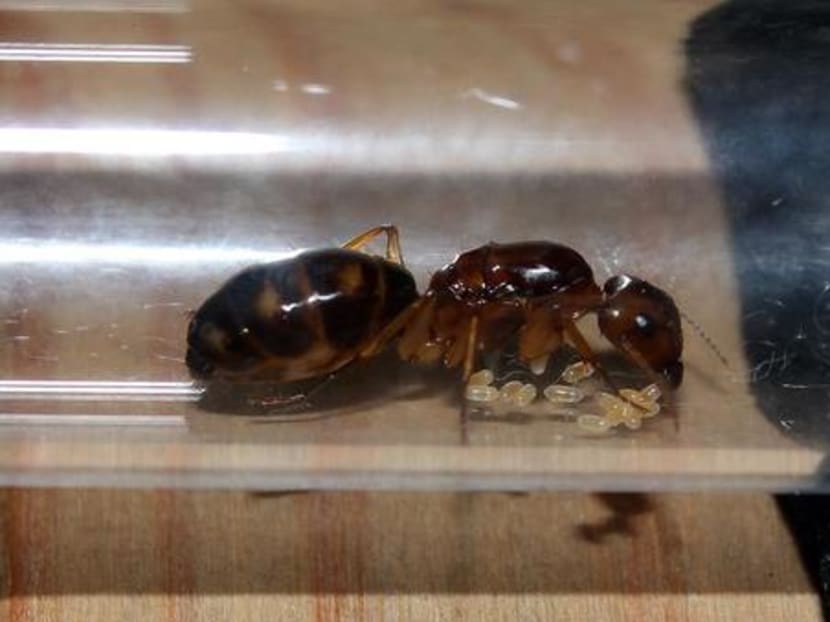
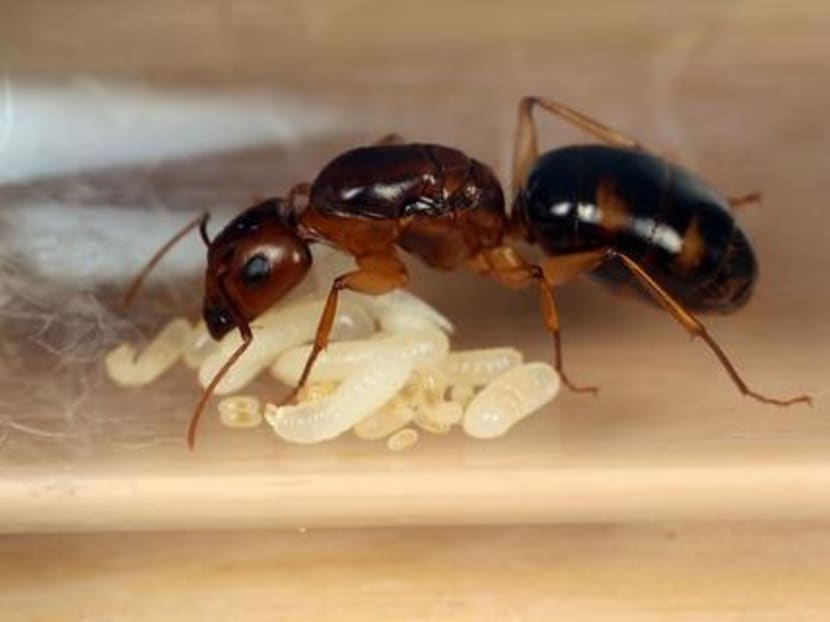
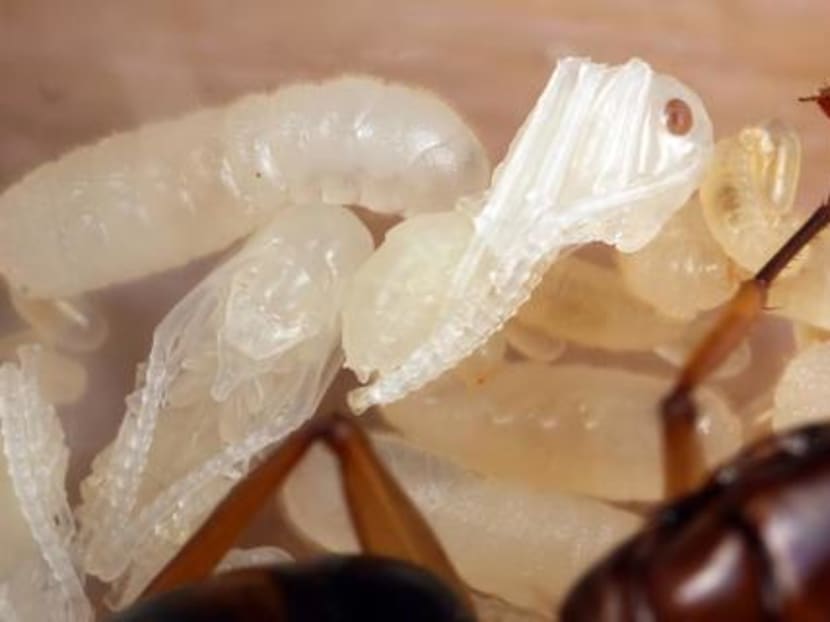
(Photos: Phira Unadirekkul)
4. Feeding your worker ants
Prepare some mealworms or crickets. Continue to keep the ants’ environment moist. You can also treat them to a drop of honey as a meal.
5. Rehouse your growing colony in a formicarium
After a few weeks or months, you may have enough worker ants to move them into a formicarium. Buy ready-made ones or make your own. To relocate your colony, simply leave the existing container open and let the ants explore.








